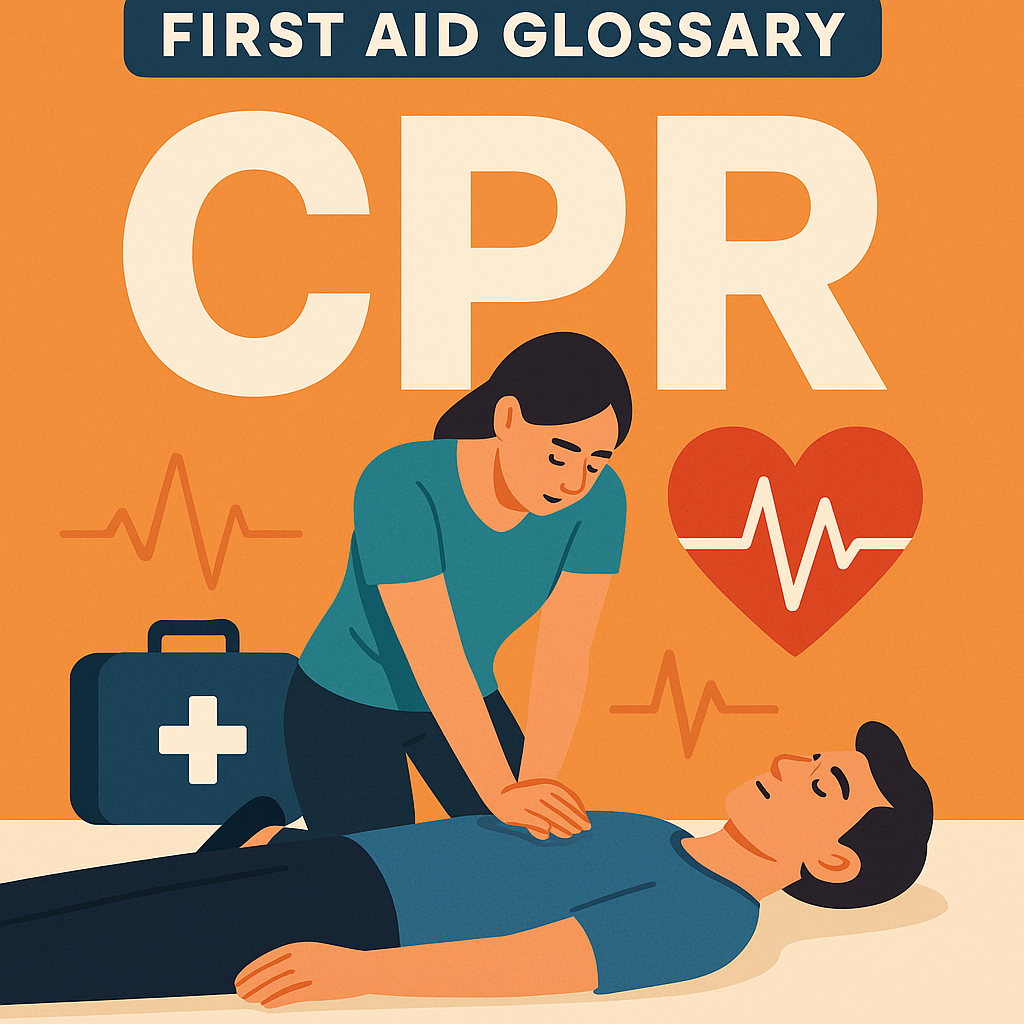- What is CPR and Why It Matters
- Common Causes and Indications for CPR
- Recognizing When CPR is Needed
- Step-by-Step CPR Guidance
- Adult CPR in 5 Easy Steps
- CPR for Children
- Trainer Tips and Safety Advice
- Key Takeaways: Understanding CPR is Empowering!
- FAQs
- How do I know if CPR is needed?
- Can it cause harm?
- What should I do if the person starts breathing again?
- Conclusion
Glossary: CPR Definition
CPR (Cardiopulmonary Resuscitation) is a lifesaving procedure performed when someone’s heart or breathing stops. It helps maintain blood flow and oxygen to vital organs until professional emergency help arrives.
—
What is CPR and Why It Matters
Cardiopulmonary Resuscitation is essential in medical emergencies. Think of CPR as a bridge that temporarily maintains life until a more robust and permanent solution arrives. Your timely intervention can mean the difference between life and death.
Why should you care about CPR?
– It Can Save Lives: According to studies, immediate CPR can double or even triple a cardiac arrest victim’s chances of survival.
– It Empowers You: Knowing CPR gives you the confidence to act in a crisis—no one wants to feel helpless when a loved one is in danger.
– It’s Not as Daunting as it Sounds: Many fear they might do it wrong, but remember: you can’t make it worse—doing something is better than doing nothing!
Common Causes and Indications for CPR
![Generate a high-quality, realistic 4K image illustrating [TOPIC]. Each image should have a slightly](https://firstaidglossary.com.au/wp-content/uploads/2025/10/generate-a-high-quality-realistic-4k-image-illust-1760692391.png)
Understanding when CPR is necessary can help you act more quickly during an emergency. Here are some common scenarios:
– Cardiac Arrest: The heart stops beating.
– Drowning: A person who cannot breathe after being submerged in water.
– Choking: An object blocks the airway, causing suffocation.
– Severe Trauma: Such as a car accident or a fall leading to unresponsiveness.
Recognizing When CPR is Needed
So, how do you know when to initiate CPR? Here are key signs to look for:
– Unresponsiveness: If the person doesn’t respond to questions or gentle shaking.
– No Breathing: Look for chest movements or listen for breath sounds.
– No Pulse: Feel for a pulse in the neck (carotid) or wrist (radial).
Step-by-Step CPR Guidance
![Generate a high-quality, realistic 4K image illustrating [TOPIC]. Each image should have a slightly](https://firstaidglossary.com.au/wp-content/uploads/2025/10/generate-a-high-quality-realistic-4k-image-illust-1760692443.png)
All right, let’s get into it! Here’s how you can perform CPR. If you’re untrained, you can still help by calling emergency services and providing hands-only CPR.
Adult CPR in 5 Easy Steps
1. Check Responsiveness:
– Gently shake the person and shout, “Are you okay?”
2. Call for Help:
– If unresponsive, call for emergency services (in Australia, dial 000) or ask someone else to do it.
3. Open the Airway:
– Tilt the head back slightly by placing one hand on the forehead and two fingers under the chin.
4. Check Breathing:
– Look, listen, and feel for breath for no more than 10 seconds.
5. Perform Compressions:
– Place the heel of one hand on the center of the person’s chest and the other hand on top. Keeping your elbows straight, push down hard and fast (at least 100 to 120 compressions per minute). Imagine you’re a hand-operated water pump: each push sends life-giving oxygen through the body.
6. Continue CPR:
– Continue with cycles of 30 compressions followed by 2 rescue breaths if trained, or just stick to hands-only compressions if you’re untrained.
CPR for Children
For infants and children (under 12), the steps differ slightly:
– Compressions: Use two fingers for infants and one hand for preschoolers.
– Breath Ratio: For adults, it’s a 30:2 ratio; for children, it’s 15:2 if there’s a second rescuer.
Trainer Tips and Safety Advice
– Practice Makes Perfect: Consider enrolling in a CPR course. Hands-on practice boosts your confidence.
– Stay Calm: Take a deep breath. Your calmness will help monitor the situation and give clear directions to any bystanders.
– Use the “Help” Button: If there’s an AED (Automated External Defibrillator) nearby, send someone to grab it; it’s a vital tool!
Key Takeaways: Understanding CPR is Empowering!
– It’s Lifesaving: Immediate action can significantly improve survival rates.
– You Can Do It: Even untrained bystanders can make a huge difference. Remember, action is better than inaction. You cannot make the situation worse by doing something.
– Keep Practicing: The more you practice and study, the more confident you’ll feel when the moment arises.
FAQs
How do I know if CPR is needed?
– Look and listen for breathing.
– Check for responsiveness.
– If you’re uncertain— err on the side of caution! Call for help and start CPR.
Can it cause harm?
– CPR can cause injuries, such as broken ribs, but it’s far better than doing nothing. The goal is to save a life!
What should I do if the person starts breathing again?
– Place them in the recovery position and monitor them closely until emergency services arrive.
Conclusion
Equipping yourself with CPR knowledge is like having a superhero cape in your back pocket. Ready to spring into action when needed, you have the power to save lives. Your willingness to learn means you’re not just a bystander—you’re prepared to make a difference!
Start by enrolling in a first aid course today. The next time you might be in a position to help, you’ll be ready, confident, and composed! Remember, a little knowledge goes a long, long way. Together, let’s get better prepared to handle any emergency that comes our way!

Leave a Reply